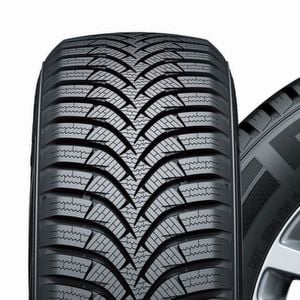Last Updated on 26.09.2024 by hrushetskyy

When you start your car up in the morning, the most essential safety feature you rely on is your brakes. They need to be in excellent working order to keep you and your family safe, preventing accidents and allowing you to slow down as you please. Your brake rotors, one of the most important parts of this whole system, are actually responsible for bringing your wheels to a standstill. That’s why it’s vital you can answer the question, “How do you know when you need new rotors?”. Read on to learn all about this vital braking component.
How do brake rotors work?
Let’s quickly look at how your brake rotor works to stop your car and where it fits in your brake system. To start with, you need to understand that your brake rotors are the big circular discs in the center of your wheels, usually quite visible from the outside.
Composition and types

Brake rotors are usually made from cast iron or steel because they handle friction and wear so well. There are two main types of rotors: solid and vented or slotted rotors. Solid rotors are typically found on the rear wheels where braking isn’t as intense, as they can’t dissipate heat so well. They have a uniform thickness. Slotted or vented rotors, on the other hand, have internal vanes that let air flow through, making them perfect for the heavy-duty braking needed at the front.
Rotors in action
When you put your foot on the brakes, what happens?
- When you brake, the first thing to happen is brake fluid is pushed through your brake lines.
- When the fluid reaches the calipers it presses pistons, closing the calipers.
- This squeezes the brake pads onto the rotors. This pressure of the pad on the rotor causes the wheel to slow down.
Rotor essentials
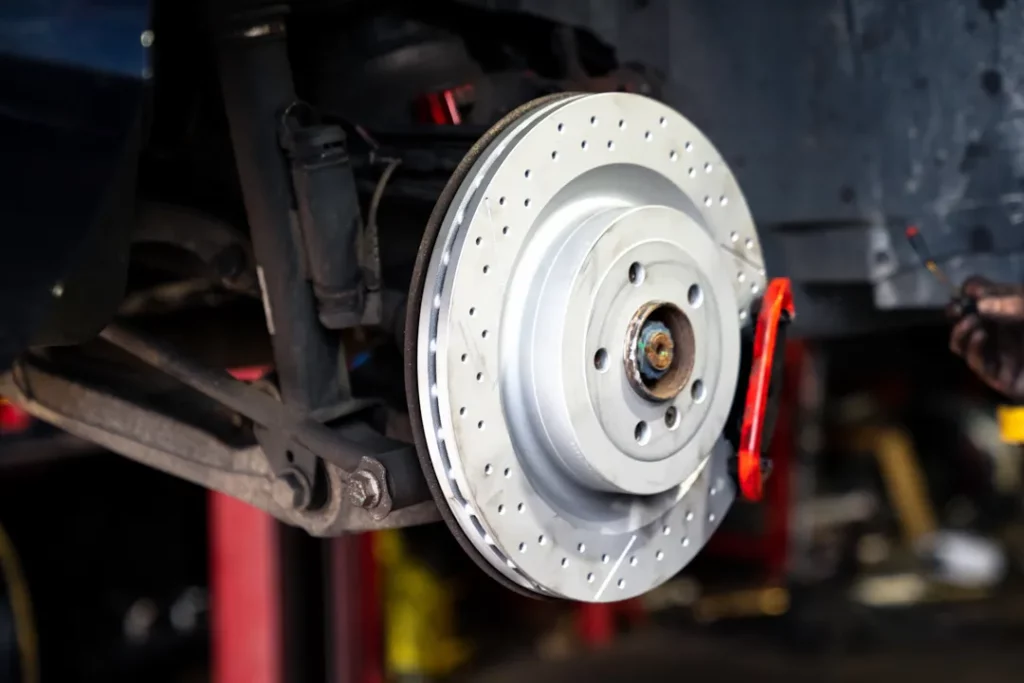
As you can see, rotors are vital for stopping your car so here are some important qualities they need to have.
- Smooth surface: The effectiveness of a rotor comes down to its friction surface—the flat areas on either side of the disc where the brake pads clamp down. These surfaces need to be smooth and even to ensure reliable stopping power.
- Heat dissipation: One of the rotor’s main jobs is to manage heat. When you put your foot on the brakes, the friction of the pads gripping the rotors generates heat, and if it’s not properly dissipated, you can end up with brake fade—a scary drop in stopping power. Vented rotors excel here by acting like a fan, directing air through the rotor to cool it down.
- Heat endurance: Rotors endure intense heat, and in heavy or performance braking, temperatures can soar past 1000°F. Managing these extreme temperatures is crucial because overheating can warp the rotor or cause it to distort, leading to a rough and unreliable braking experience. That’s why the materials and design of this essential component are so vital.
- Immense force: Bringing a vehicle to a halt involves immense braking force. When you press the brake pedal, the caliper squeezes the brake pads against the rotor, converting kinetic energy into thermal energy through friction. This delicate balance of materials and engineering ensures your car stops reliably every time.
As you can see, brake rotors are precision components that balance thermal dynamics and mechanical precision. They dissipate heat, provide a friction surface for the brake pads, and are vital for safe vehicle operation. So making sure your rotors are in good working order and replacing any worn rotors, is essential.
When to replace brake rotors?
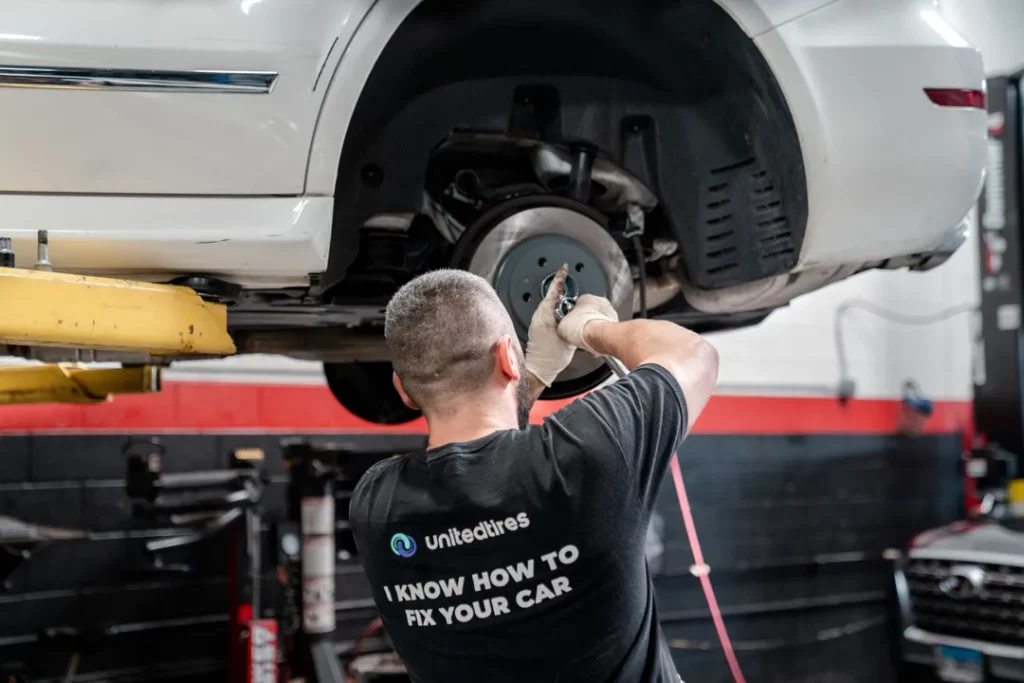
As you can see, your rotors are essential auto parts. But brake rotors wear out over time, so it’s important to recognize the clues that they are coming to the end of their effective life.
Vibrations in the steering wheel, strange noises when braking and visible damage to the rotors are all signs that it might be time for new rotors.
Vibrations
Have you recently noticed a slight vibration in your steering wheel or brake pedal when you brake? This may mean there’s a problem with the rotor, like lateral runout or thickness variation, causing uneven contact with the brake pads. This sensation is often mistakenly called “warped” rotors, but it’s actually uneven surfaces on the rotor caused by bits of brake pad material attaching to the rotor. This can be caused by over or under-heating in your brakes. Fortunately, this doesn’t always mean you have to get new rotors, as sometimes you can remove these deposits.
Noise
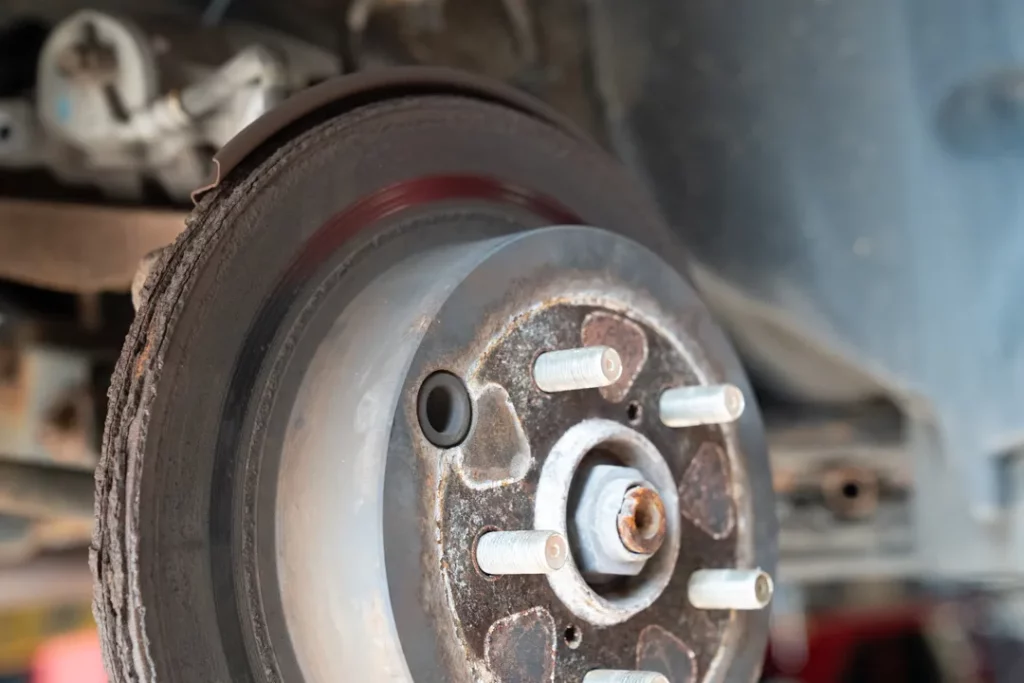
If you hear squealing, grinding, or howling when braking, don’t ignore it. These sounds mean that your rotors are worn down beyond their safe limits or have surface damage like grooves or scoring from metal-to-metal contact. This noise might be intentional, as many brake pads have a special clip attached to them that makes a noise on the rotors when your rotor reaches a minimum thickness. This is a safety feature to ensure you switch out your rotors while you still have enough metal left to allow you to stop safely.
Cracks
Cracks on a rotor can be a big red flag. However, this depends on whether there are small hairline cracks on the surface or larger structural cracks in the rotor. The small hairline cracks may not call for replacement rotors, although it’s still a good idea to get your mechanic to check them out. But larger cracks, which result from severe stress, like repeated hard stops or extremely high temperatures, are more serious. A cracked rotor like this compromises your braking system and should be replaced immediately.
Scores and grooves
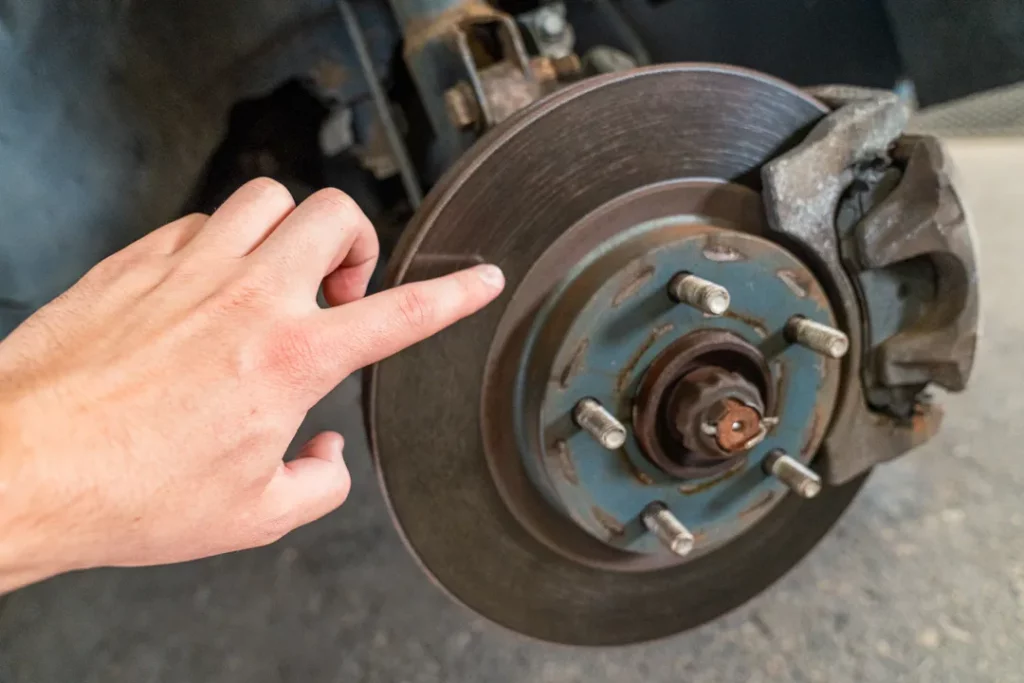
Another thing to look out for is grooves or deep scoring on the surface of your rotor. While some grooves can be machined away, if any grooves are deeper than 0.010 inches (0.25 mm), it’s safer to replace the rotor. Deep grooves reduce the friction between your pads and the rotors, which can affect braking smoothness and safety. They may also be a sign of compromised rotor integrity and heat dissipation.
Warped brake rotor
When your brake pedal pulses or the steering wheel vibrates, it’s often blamed on a “warped” rotor. In reality, rotors don’t twist out of shape. Instead, uneven cooling or high heat causes certain sections to expand unevenly, leading to thickness variation and that pulsing feeling.
When it comes to brake rotor health, it’s always better to be safe than sorry. Vibrations, noises, cracks, grooves, and the so-called “warping” are all signs that you should visit your mechanic as soon as they start or check your rotors yourself. Don’t wait for your brakes to fail; get your braking system checked out and replace your rotors at the first sign of trouble.
Frequently Asked Questions
How do I know if my brake rotors need replacing?
You’ll know it’s time to replace your brake rotors if you notice a few key signs: your steering wheel or brake pedal vibrates when you brake, you hear squealing, grinding, or howling noises, or you see visible damage like deep grooves or cracks on the rotor surface. Additionally, if your brakes feel less responsive or you feel a strange pulsing sensation when braking, it’s a good idea to have your rotors checked out by a professional. Regular brake inspections are a good idea, as they can catch these issues early on, making sure your braking system always works safely and effectively.
What are the symptoms of bad rotors?
Bad brake rotors have a few different symptoms, including sounds, vibrations, and visible marks. These can include a vibrating feeling when you brake, in your steering wheel or brake pedal, or strange squealing, grinding, or howling noises you might hear while braking. Visible symptoms include deep grooves or cracks on the rotor surface or score marks. These symptoms indicate that your rotors are worn or damaged, which can seriously affect your car’s braking performance, so it’s always important to get them checked out.
Do I need new rotors or just brake pads?
When deciding between new rotors or just pads, consider a few factors. If you’re experiencing pulsation or vibration when braking, it often points to rotor issues. This could mean they’re warped or uneven, affecting braking smoothness. On the other hand, if you hear squealing or grinding, it may be a brake pad issue, signaling they’re worn down and need replacing. Sometimes, you might need to replace both pads and rotors at the same time if they have both worn out. Get your mechanic to give your braking system a thorough inspection to pinpoint the exact problem and make sure everything is working properly.
How much should brake rotors cost?
A single brake rotor is likely to cost between $75 and $150, but it will vary based on several factors, including your car’s make and model, the quality of the rotors, and whether you’re replacing just the rotors or the entire brake system. Generally, for a standard vehicle, you can expect to pay anywhere from $150 to $300 for a pair of brake rotors. Higher-performance or specialty vehicles may have more expensive options. It’s also important to factor in labor costs unless you’re very experienced at car repairs. Labor to replace rotors is likely to cost between $150 and $250 for a single axel (2x rotors), but will vary a lot depending on your location and vehicle.
Share the Knowledge
